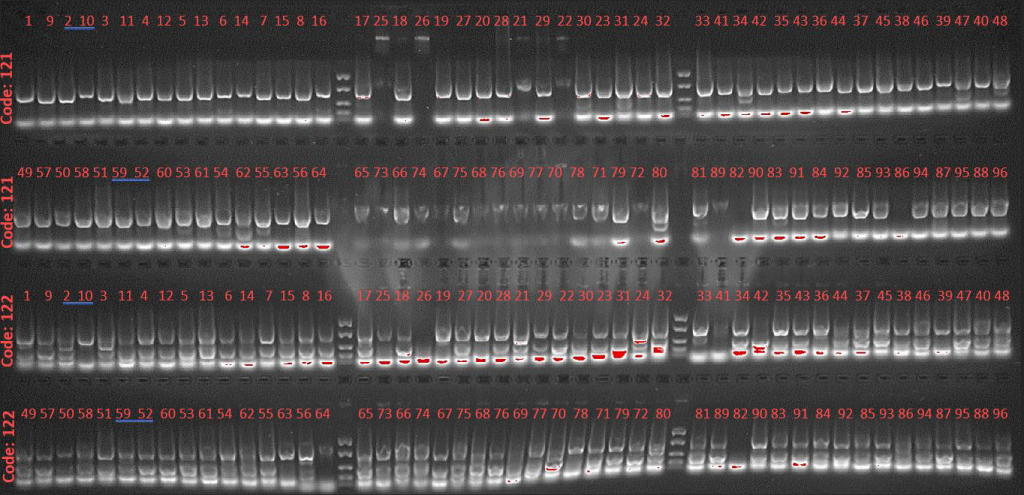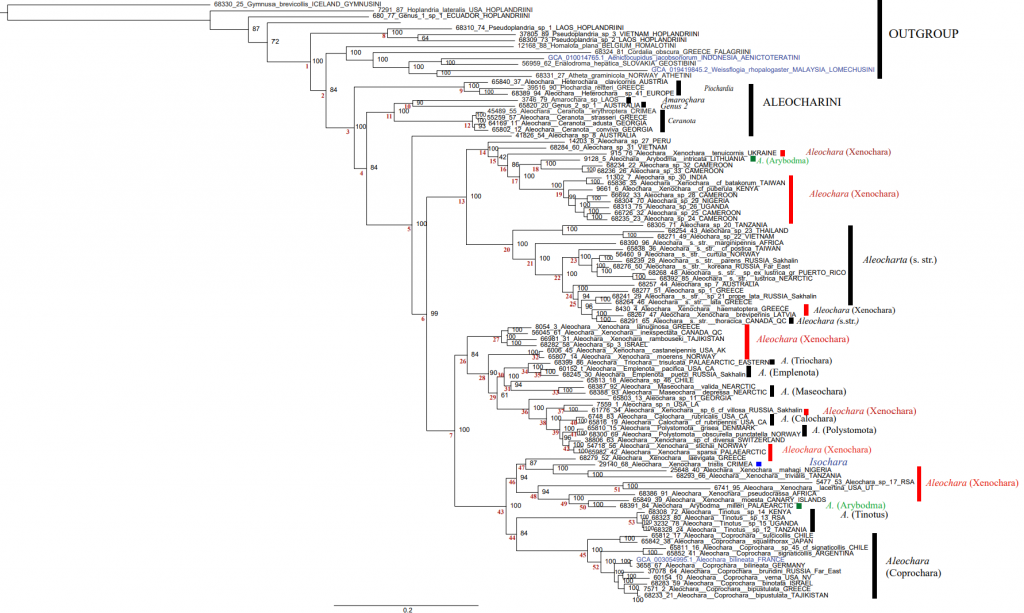Yesterday, Jørgen Hansen Starholm defended his Master thesis “Solving phylogenetic relationships within the Rove beetle genus Aleochara (Coleoptera: Staphylinidae) by utilizing a novel approach based on High Throughput Sequencing” successfully. The purpose of the thesis was to infer a phylogeny of Aleochara based on more nuclear markers and a denser taxon sampling, compared to previous published works. To accomplish this, Jørgen applied a novel methodology, which combined multiplex PCR and high throughput sequencing. This method had recently been developed for beetles in general by Che et al. (2017). The study developed primer pairs for 95 genes, which could be amplified together in different combinations in a single round and then sequenced using new technology. This allows to generate much more sequencing data per species at much lower costs. Jørgen was able to adapt the methods to Aleochara for 24 genes.

Aleochara is a genus within Staphylinidae and consists of 16 subgenera with 547 described species. These occur almost all over the world including Norway. The phylogenetic relationships within the genus is unresolved and the monophyly of several subgenera is also uncertain. Monophyly means that all species of the subgenus go back to one common ancestor and all descandants of that ancestor are included in the subgenus. In Jørgen’s thesis, a total of 97 species were included, most of which were from Aleochara, but also a few closely related staphylinid species were included as outgroup species for comparative purposes. Phylogenetic trees showing the relationships between the species were created using different settings to assess how these would affect the outcome of the tree reconstruction.

In all trees, Aleochara was found to be non-monophyletic. The analyses demonstrated that the inclusion of more nuclear markers resulted in higher bootstrap values and therefore higher confidence in the relationships between species. The analyses significantly supported the redefined genus Aleochara and seven subgenera (Ceranota, Polystomota, Calochara, Emplenota, Maseochara, Tinotus and Coprochara). However, the subgenera Aleochara, Arybodma, Heterochara and Xenochara were recovered as non-monophyletic, and require a redefinition. This will be the next analyses to do.
FEZ congratulates you, Jørgen, to you wonderful thesis and wishes you the best of luck for your next steps.
Che, L. H., Zhang, S. Q., Li, Y., Liang, D., Pang, H., Ślipiński, A., & Zhang, P. (2017). Genome-wide survey of nuclear protein‐coding markers for beetle phylogenetics and their application in resolving both deep and shallow‐level divergences. Molecular Ecology Resources, 17(6), 1342-1358. https://doi.org/10.1111/1755-0998.12664
![]()

1 Comment on “Staphylinid beetles, 24 new genetic markers and new insights into their taxonomy – Jørgen’s defence”